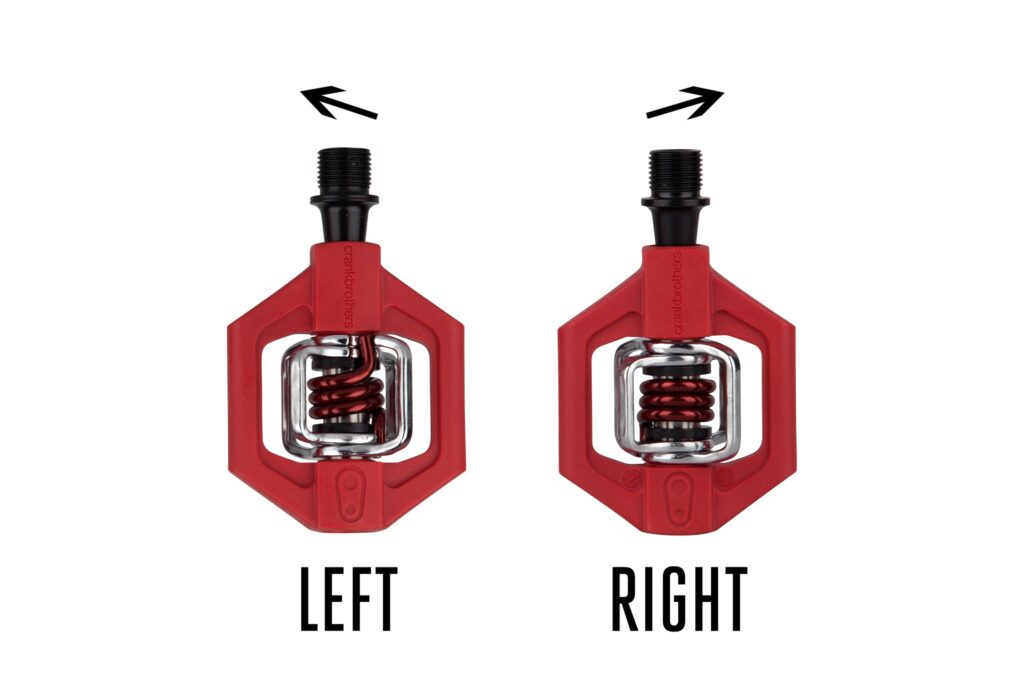Have you ever wondered why bike chains seem so complicated? You’re not alone.
As a cyclist, you might have faced the puzzle of whether bike chains are universal. Imagine confidently walking into a store, grabbing any chain, and fitting it perfectly onto your bike. Sounds convenient, right? But is it really that simple?
Understanding the compatibility of bike chains can save you time, money, and frustration. Dive deeper into this topic with us, and you’ll uncover the secrets that can enhance your cycling experience. Keep reading to learn what makes your bike chain tick and whether it’s time for a change.

Credit: www.parktool.com
Types Of Bike Chains
When you first start exploring bike maintenance, you might wonder if bike chains are universal. The truth is, bike chains are not one-size-fits-all. Understanding the different types of bike chains is crucial for ensuring your bike performs optimally. This knowledge helps you make informed decisions whether you’re tuning up your ride or considering an upgrade.
Bike chains come in various types, each designed for specific bike models and riding styles. The right chain can enhance your biking experience, making your rides smoother and more enjoyable. Let’s dive into the different types of bike chains available.
1.Single-Speed Chains
Single-speed chains are the simplest type of bike chains. They are used on bikes with one gear, such as cruisers and fixed-gear bikes. Because they don’t need to shift between multiple gears, they are thicker and more durable.
These chains are robust and less likely to slip, making them perfect for city commutes. Have you ever wondered why your single-speed bike rarely needs chain adjustments? It’s the straightforward design of these chains that ensures reliability.
2.Multi-Speed Chains
Multi-speed chains are crafted for bikes with multiple gears, like road bikes and mountain bikes. They are narrower to fit within the tight spacing of gear cogs. This design allows for smooth transitions when shifting gears.
If you love tackling varied terrains, multi-speed chains will be your best ally. They are designed to handle the demands of frequent gear changes. Have you experienced the thrill of climbing a steep hill with ease? That’s the multi-speed chain working seamlessly.
3.E-bike Chains
E-bike chains are specially reinforced to handle the extra torque generated by electric motors. They are built to last longer and provide stable performance under higher loads. If you’re an e-bike enthusiast, you’ll appreciate the sturdiness these chains offer.
Ever felt the power surge as you accelerate on your e-bike? E-bike chains are designed to withstand such power without compromising safety or efficiency.
4.BMX Chains
BMX chains are crafted for durability and strength, catering to the high-impact nature of BMX riding. They are thicker and more robust than typical chains, ensuring they can withstand tricks and jumps.
Do you ever watch BMX riders perform gravity-defying stunts and wonder how their bikes hold up? BMX chains provide the necessary resilience to support such extreme activities.
Choosing the right chain for your bike is not just about compatibility, but also about enhancing your riding experience. Have you ever had a chain break mid-ride? Selecting the proper chain type can prevent such mishaps and keep you pedaling smoothly.
Compatibility Factors
Bike chains vary in size and type, affecting their compatibility with different bikes. Consider chain width, length, and speed compatibility when choosing a chain for your bike. Ensure the chain matches your bike’s derailleur system and cassette for optimal performance.
When it comes to bike maintenance, one question that often pops up is whether bike chains are universal. Understanding the compatibility factors is crucial for any cyclist looking to replace or upgrade their chain. Factors like chain width, drivetrain system, and bike type can influence compatibility. Let’s dive into these factors to help you make an informed decision. ###Chain Width
The width of a bike chain is one of the most important compatibility factors. Chains come in different widths, such as 8-speed, 9-speed, or 10-speed, corresponding to the number of gears on your bike. It’s essential to match the chain width with your bike’s drivetrain system. If you’re unsure, check the bike’s manual or consult a professional at your local bike shop. Using the wrong chain width can lead to poor shifting performance and excess wear on your bike. ###Drivetrain System
Your bike’s drivetrain system plays a significant role in chain compatibility. Different bikes have different systems, including single-speed, multi-speed, or electric. Each system requires a specific type of chain. For example, a single-speed bike won’t work well with a chain designed for multi-speed bikes. Knowing your drivetrain system will help you choose a chain that enhances performance and prevents unnecessary damage. ###Bike Type
The type of bike you own can also influence chain compatibility. Mountain bikes, road bikes, and hybrid bikes may require different chains due to their unique designs and intended use. A mountain bike chain might be more robust to handle rough terrains, whereas a road bike chain is optimized for speed and efficiency. Think about where you ride most often and choose a chain that suits your biking style. ###Personal Experience
I once mistakenly installed a chain that didn’t match my bike’s drivetrain. It led to frustrating gear slips and an annoying rattling sound. After switching to the correct chain, my rides became smoother and more enjoyable. This experience taught me the importance of understanding compatibility factors before making a purchase. ###Thought-provoking Question
Have you ever struggled with mismatched bike components? How did it affect your cycling experience, and what did you learn from it? Your insights could be just what another cyclist needs to avoid similar issues. Share your stories and help create a community of informed cyclists. Understanding these compatibility factors can save you time, money, and frustration. Next time you think about swapping your bike chain, remember these points and ensure your choice aligns perfectly with your bike’s needs.Choosing The Right Chain
Bike chains are not universal; each bike requires a specific chain type based on its drivetrain system. Compatibility depends on the number of gears, chain width, and material. Knowing your bike’s specifications ensures you choose the right chain, enhancing performance and safety.
Choosing the right bike chain can feel daunting, especially if you’re new to cycling. Not all bike chains are universal, and selecting the wrong one can impact your ride’s performance and your bike’s overall health. Understanding the essentials can make this decision much simpler and ensure a smoother cycling experience.Understanding Chain Compatibility
Your bike chain needs to match the drivetrain system of your bicycle. This means considering the number of gears your bike has. A chain designed for a 10-speed bike won’t work well on an 8-speed bike. Always check your bike’s specifications before making a purchase.Chain Width Matters
Did you know that the width of a bike chain varies? A narrower chain is needed for bikes with more gears. If you’re riding a mountain bike with 12-speed gears, you’ll need a narrower chain than someone with a 7-speed road bike. This small detail can significantly impact shifting performance.Material And Durability
Chain materials matter. While most are made from steel, you can also find those with special coatings or made from titanium for added durability. If you’re an avid cyclist, investing in a high-quality chain can save you from frequent replacements. Consider how often and where you ride when choosing the material.Ease Of Maintenance
Some chains are easier to maintain than others. Look for chains with quick-link systems that simplify installation and removal. This feature can be a lifesaver if you’re new to bike maintenance. Keeping your chain clean and well-lubricated extends its life and improves your ride.Personal Experience: Learning The Hard Way
I once bought a chain without checking the speed compatibility. The result? Awful shifting and a lot of frustration. It taught me the importance of knowing your bike inside out. So, do your homework, and don’t make the same mistake. Choosing the right chain isn’t just about buying what’s available. It’s about understanding your bike’s needs and improving your cycling experience. Next time you shop for a chain, will you consider these factors?
Credit: www.amazon.com

Credit: www.ebay.com
Frequently Asked Questions
Does Any Bike Chain Fit Any Bike?
Not all bike chains fit every bike. Different bikes require specific chain sizes and types. Consider the bike’s speed, drivetrain, and gear system. Measure the old chain or consult a professional for compatibility. Using the correct chain ensures optimal bike performance and longevity.
How Do I Know Which Bike Chain To Buy?
Check your bike’s speed compatibility and chain width. Consider material and brand for durability. Consult your bike’s manual or a professional for guidance.
How Do I Know My Bike Chain Size?
Measure your bike chain using its pitch and link count. Pitch is the distance between pins, commonly 1/2 inch. Count the number of links to determine the chain length. Check your bike manual for compatibility. Ensure accurate measurements for optimal performance and safety.
Conclusion
Bike chains are not universal. Different bikes need different chain sizes. It’s important to know your bike’s specific requirements. This helps avoid performance issues. Check your bike’s manual. It provides detailed information. Proper chain size ensures smooth rides. And it prevents unnecessary wear.
Always consult an expert if unsure. They can guide you effectively. Choosing the right chain improves your biking experience. It also increases your bike’s lifespan. Keep your bike in top condition. Regular maintenance is key. Understanding your bike’s needs is crucial.
It’s the first step to happy cycling. Stay informed. Enjoy every ride!


